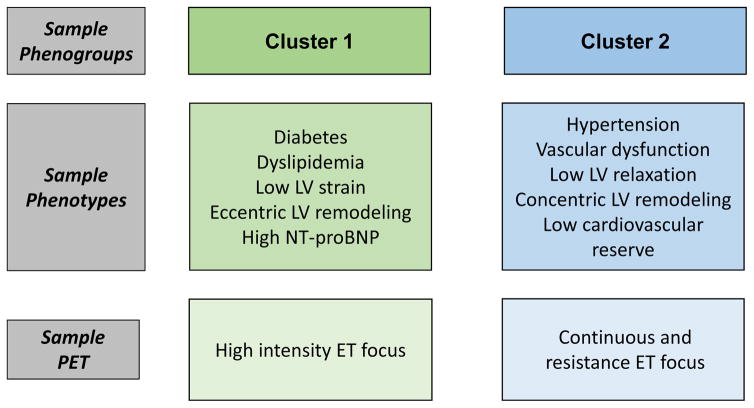Figure 2.
Hypothetical phenogroups and precision exercise treatment that could be used to prevent/treat phenogroup-specific CVD sequelae. Cluster 1 patients have a prevalence of diabetes, dyslipidemia, decreased LV strain, eccentric remodeling, and elevated NT-proBNP. Cluster 2 patients have a prevalence of hypertension, vascular dysfunction, impaired LV relaxation, concentric LV remodeling, and low cardiovascular reserve. Each exercise treatment prescription would be individualized based on cardiovascular reserve testing (CPET) and/or strength testing, and the intensity and duration of training sessions would be sequenced in such a fashion that training volume is continually increased across the entire program.77 However, each patient cluster may have a unique exercise treatment focus. In cluster 1 patients, a sample precision exercise treatment prescription would incorporate more high intensity exercise training given the evidence that high intensity exercise has been shown to lower proBNP, reverse eccentric remodeling, and improve LV contraction.75 In cluster 2 patients, a sample precision exercise treatment prescription would incorporate more continuous and resistance exercise training given the evidence that moderate intensity continuous exercise and resistance exercise have been shown to improve vascular dysfunction, reverse concentric remodeling, and increase arterial-venous oxygen content difference (A-VO2 Diff), thus improving cardiorespiratory fitness.83

